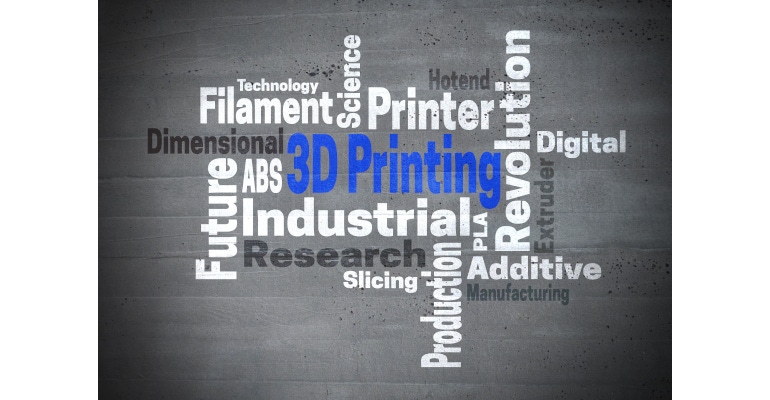Printer Uses Algorithm to Detect, Correct 3D-Printing Errors
Researchers have created 3D printers that can learn from the experiences of other machines to detect and correct errors while fabricating objects, even when working with new designs or unfamiliar materials, they said.
October 14, 2022

A team of engineers from the University of Cambridge developed an algorithm that gives new or existing machines this capability, along with functionality with which the printers can even learn how to print materials by themselves, they said. Though 3D printing has become a more reliable way to fabricate parts and objects in a range of industries over the past decade or more, it still has its drawbacks. The process is vulnerable to production errors that create anything from tiny inaccuracies in a part versus the design, mechanical weaknesses, or complete printing failures, researchers said.
Because so much can go wrong, and so much goes into the 3D printing process itself, a failed print is a frustrating scenario, noted Sebastian Pattison from Cambridge’s Department of Engineering, one of the researchers on the project. “When that happens, all of the material and time and energy that you used is lost," he said in a post on Cambridge’s Department of Engineering's research news page.
Currently, the way to prevent or correct errors is for a skilled worker to observe the process and then recognize that something's going wrong—which can be a challenge even for the trained eye.
In this case, they then must stop the print, remove the part, and adjust settings for a new part. This error-spotting can be a complicated process, since if it involves a new material or printer, the worker has to learn the new set-up before keeping an eye out for errors. Overall, it's an imperfect science, as it's quite difficult to stay on top of every 3D printing process, particularly if multiple printers are being used at the same time, researchers said.
'Driverless' 3D Printer
That's exactly why the Cambridge researchers set out to improve how errors in 3D printing are spotted during production, aiming to create "a driverless car system for 3D printing," said Douglas Brion, from the university's Department of Engineering.
While engineers have been developing automated 3D printing monitoring, existing systems can only detect a limited range of errors in one part, one material, and one printing system. The system the Cambridge team aimed to develop would be something a bit different, Brion said.
“A driverless car would be useless if it only worked on one road or in one town—it needs to learn to generalize across different environments, cities, and even countries," he said in the post. "Similarly, a ‘driverless’ printer must work for multiple parts, materials, and printing conditions.”
The algorithm the team developed could indeed serve as that driverless car system that engineers have been looking for to correct errors during the 3D printing process, researchers said.
“What this means is that you could have an algorithm that can look at all of the different printers that you're operating, constantly monitoring and making changes as needed—basically doing what a human can't do,” Pattison added.
How It Works
To develop the algorithm that powers the system, researchers trained a deep learning computer vision model by showing it about 950,000 images captured automatically during the production of 192 printed objects.
To provide the model with information on how to monitor a printing process, they labeled each of the images with the printer's key settings—such as the speed of printing, temperature of the printing nozzle, and flow rate of the printing material. They also provided the model with information about how far those settings were from good values, which taught the algorithm to learn how errors arise, researchers said.
“Once trained, the algorithm can figure out just by looking at an image which setting is correct and which is wrong—is a particular setting too high or too low, for example, and then apply the appropriate correction,” Pattison said in the post.
The algorithm also can continue to gather data about appropriate settings as it goes, which continually improves its ability to spot errors, he said. Researchers released the full dataset used to train the AI for free online.
Material- and Part-Agnostic
Using their approach, Brion and Pattinson were able to create an algorithm that is generalizable—that is, it can be applied to identify and correct errors in unfamiliar objects or materials, or even in new printing systems, they said. This is helpful because errors that occur across various printing materials and parts can be similar, they said.
“When you’re printing with a nozzle, then no matter the material you’re using—polymers, concrete, ketchup, or whatever—you can get similar errors,” Brion said in the post. "Errors that arise from similar settings will have similar features, no matter what part is being printed or what material is being used."
For example, if the nozzle is moving too fast, the part will end up with blobs of material, or if too much material is being pushed out at one time, then the printed lines will overlap, forming creases, he said.
Researchers published a paper on their work in the journal Nature Materials. With the help of Cambridge's commercialization arm Cambridge Enterprise, Brion also has spun off a company called Matta that will develop the technology for commercial applications.
Indeed, the trained algorithm could be more efficient and reliable than a human operator at spotting errors, providing a key quality-control function in industry applications where component failure could have serious consequences, Brion said
“We’re turning our attention to how this might work in high-value industries such as the aerospace, energy, and automotive sectors, where 3D printing technologies are used to manufacture high-performance and expensive parts,” he said in the post.
About the Author(s)
You May Also Like



